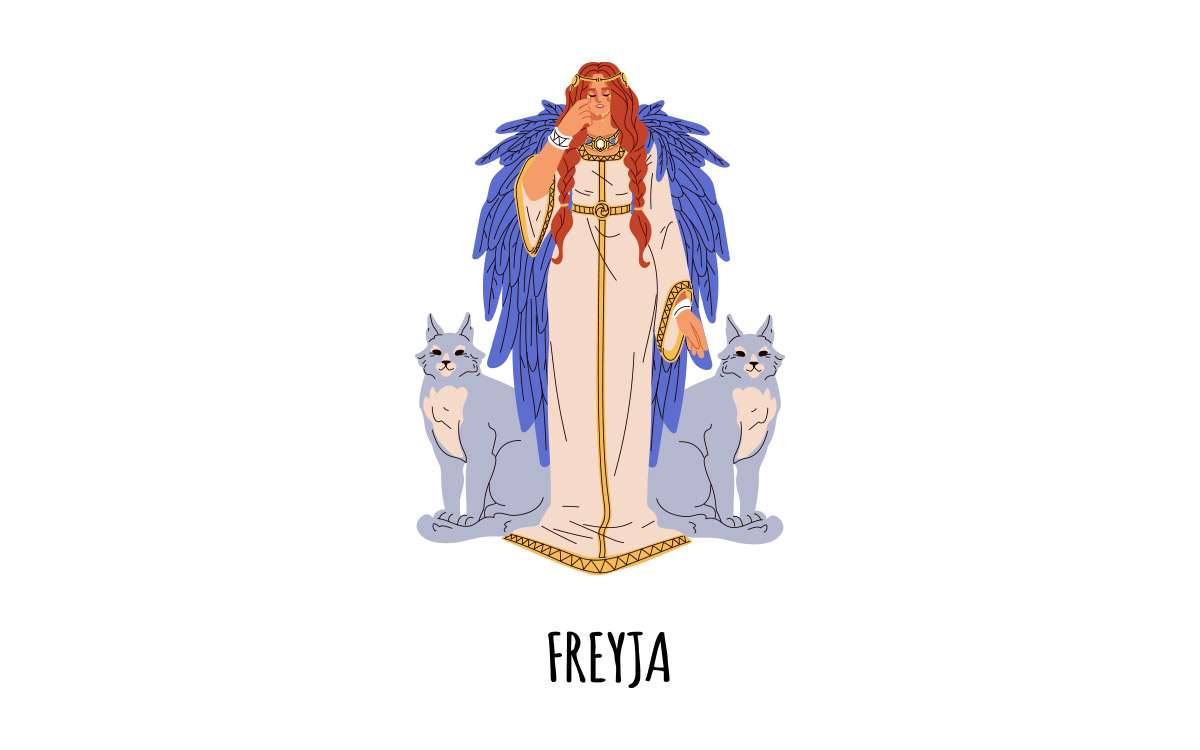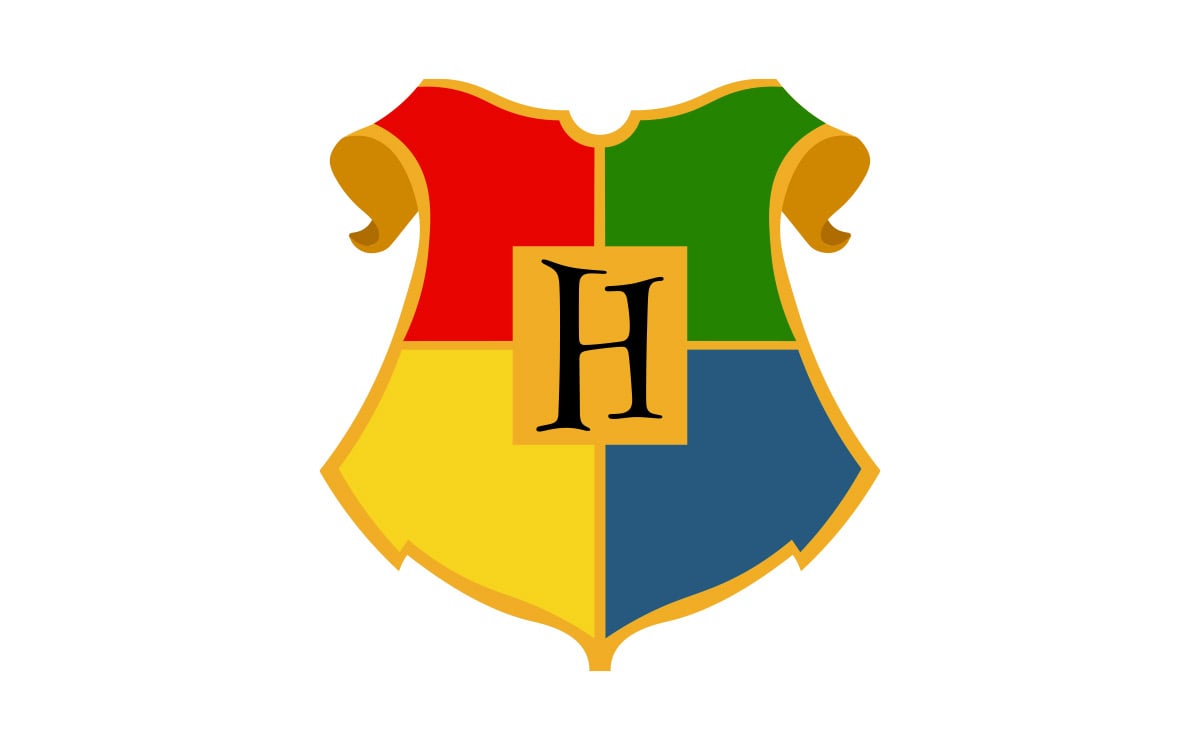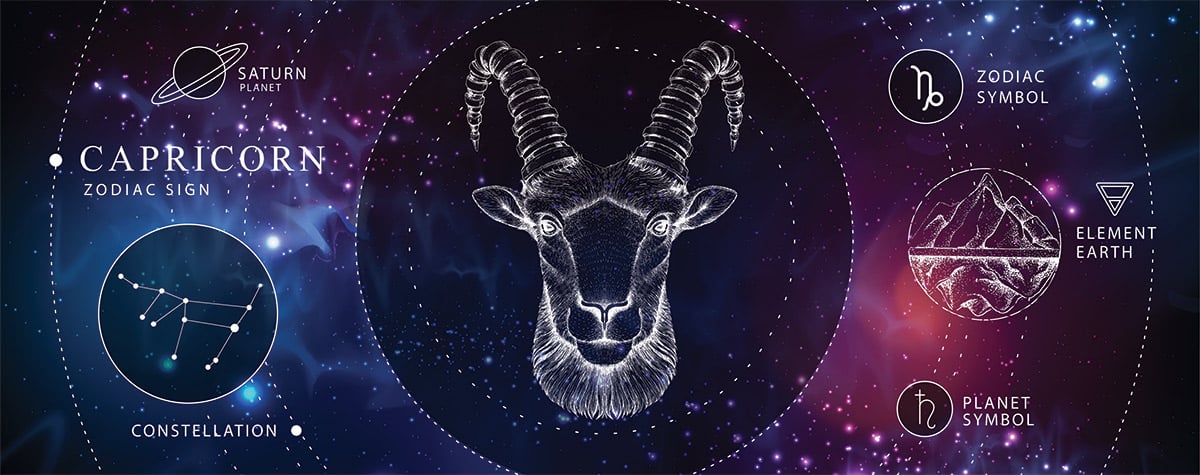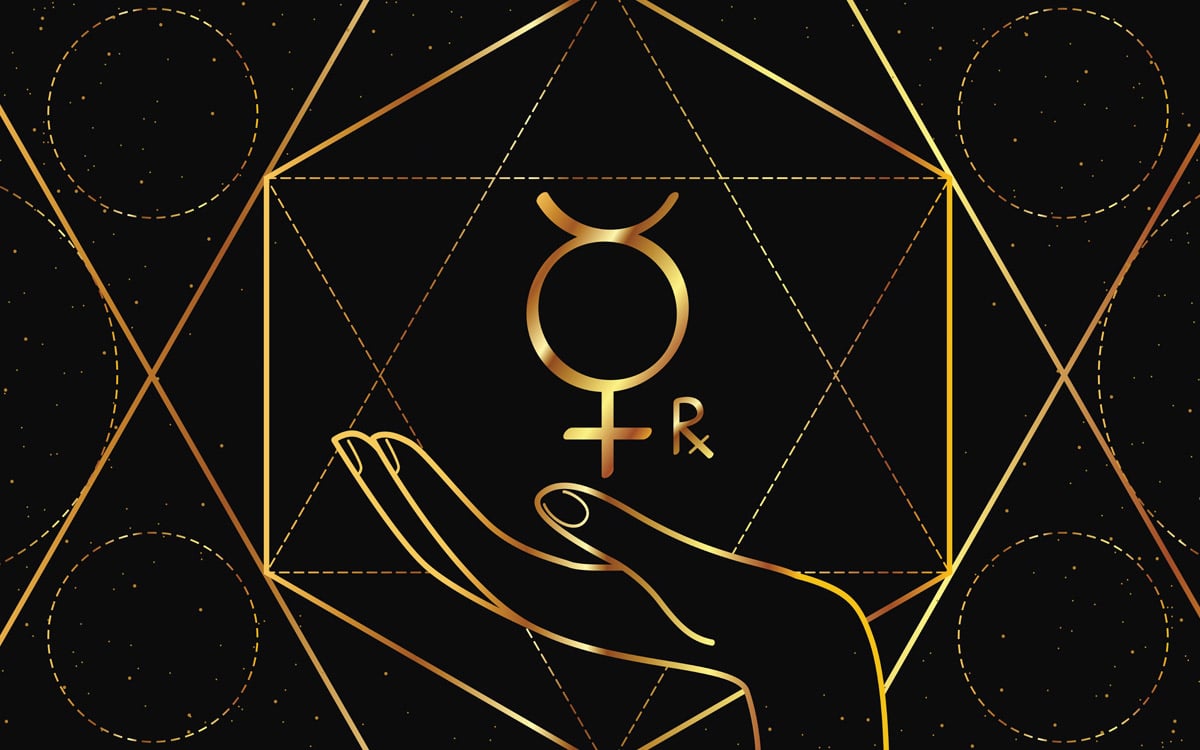Norse mythology is the collective of myths of the North Germanic peoples during the time of the Vikings from 795 to 1100 AD. The post Norse Mythology: A Look at Viking Gods, Goddesses, and Heroes appeared first on FanBolt.
There has always been a fascination with the culture of ancient civilizations. Among them, Norse mythology is one of the most popular, second only to its Greek and Roman counterparts in popularity. One aspect that has long attracted people to ancient Norse culture is their religious customs and the deities they worship.
Norse mythology is the collective of myths of the North Germanic peoples during the time of the Vikings from 795 to 1100 AD. It stems from the Old Norse religion and even after Christianity spread in Scandinavia as well as the Nordic folklore. Norse mythology is made up of stories of various beings, gods, goddesses, and heroes from sources before and after the pagan period. This includes medieval manuscripts, archaeological findings, and folk traditions.
The surviving stories in Norse mythology are comprised of interactions between gods and other beings. There is also the Norse version of the story of creation, along with the first two humans, among others. These stories and the gods and goddesses involved give another look into what life was like at the time for the Vikings.
Norse Gods and Goddesses
Norse mythology is made up of stories of various creatures but is also more dominated by the gods. The Norse gods and goddesses were among the most unique of any mythology. Like Greek and Roman gods, Norse gods and goddesses often intervened in human life. Norse gods and goddesses played a big role in Norse mythology and in the Vikings’ everyday life.
There are three tribes of Norse gods and goddesses in Norse mythology. There are the Aesir gods and goddesses, who are the main tribe of deities who reside in Asgard and maintain order in the cosmos. And there are the Vanir gods and goddesses, who are more associated with the “natural world” compared to the Aesir. The third group, Disir, is made up of goddesses and is popular in private worship.
The contrasts between the Aesir and Vanir gods stem from the oppositions in Viking society. As the Aesir were seen to advise people in positions of power, the Vanir were popular in farming communities. These two tribes, while both living in Asgard, are often at odds with each other to the extent that they go to war against each other. This was also known as the Vanir Wars or the Aesir-Vanir Wars.
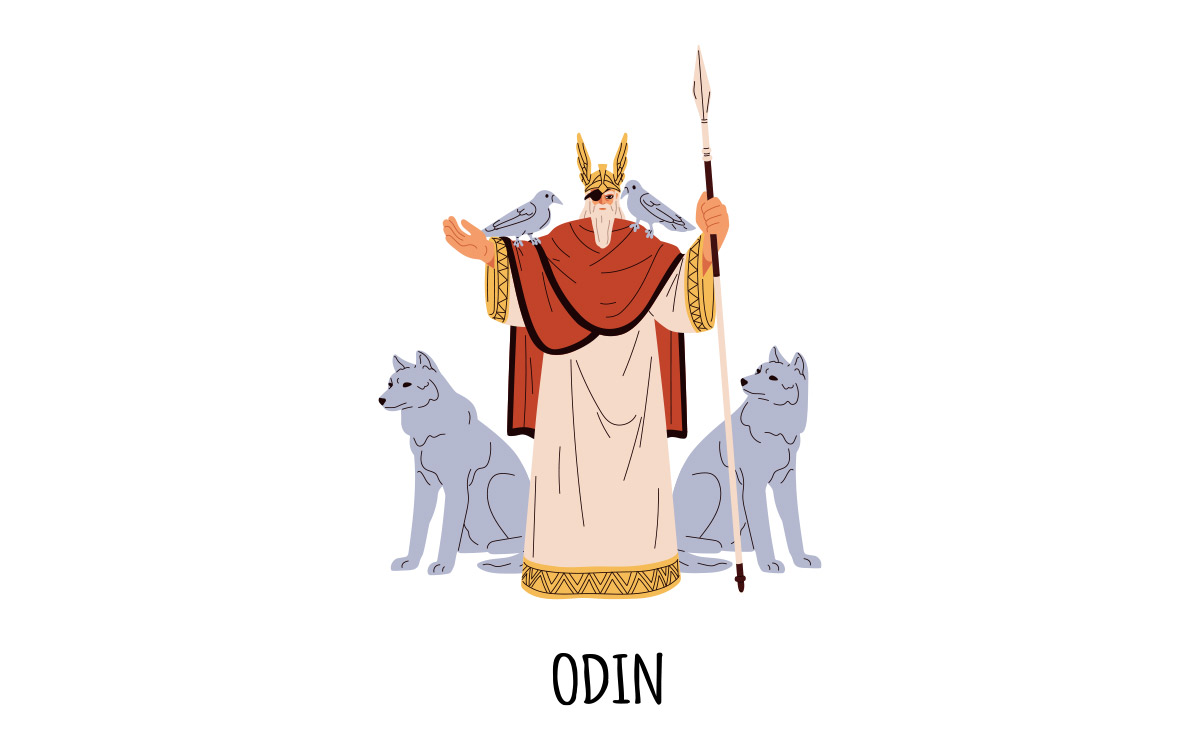
Odin: The God of Wisdom, War, and Death
Odin was the king of the Aesir tribe of Norse gods and was also known as the “father of all gods.” He’s often depicted as a bearded old man with one eye and wearing a hat and a cloak. Odin was known to ride a flying eight-legged horse called Sleipnir. He was also said to have killed the first being to exist, Ymir, before carving up his body to create the Earth.
Odin was one of the most powerful of all the Norse gods and was associated with several other themes, such as death, wisdom, knowledge, healing, and war. He also ruled over the “hall of the slain,” more popularly known as Valhalla. A variation of Odin’s name, Woden, was the origin of the word Wednesday.
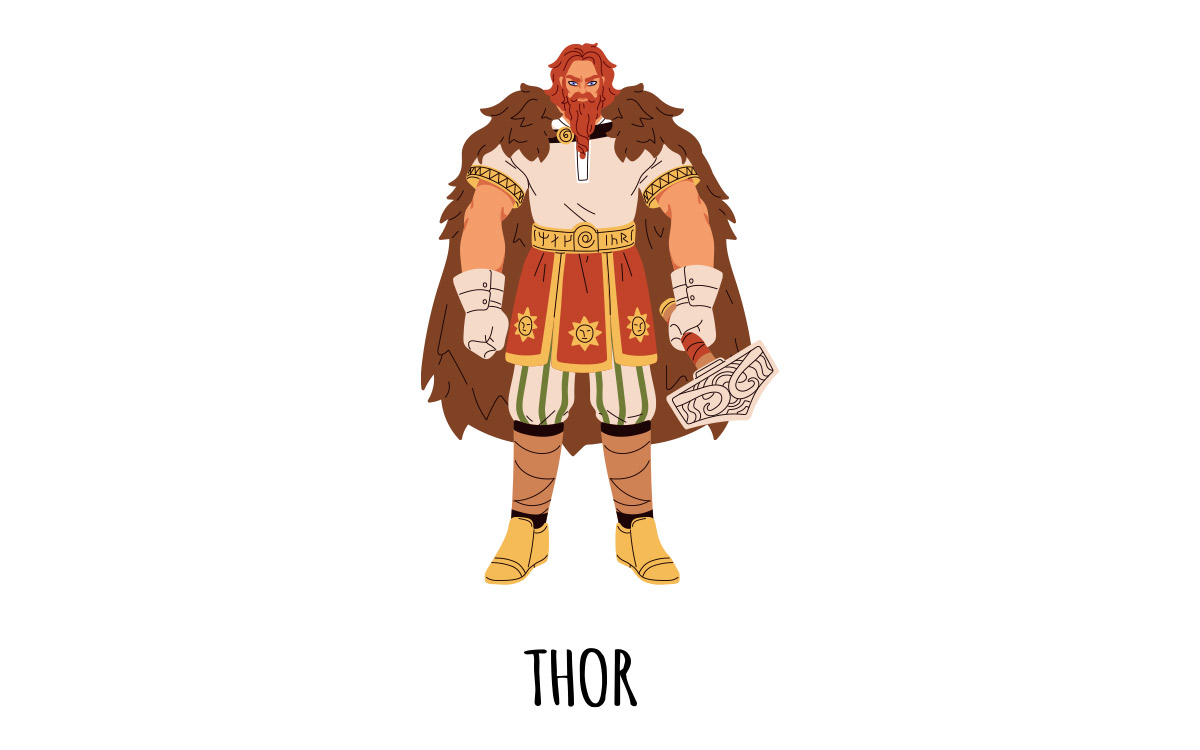
Thor: The God of Thunder, Lightning, and Storms
Perhaps the most popular Norse god, especially in recent decades thanks to the Marvel Universe, is Thor. Thor, the god of thunder and lightning, wielded the powerful hammer known as Mjolnir. He was depicted as riding a chariot drawn by two giant goats called Tanngniost and Tanngrisnir.
Despite being a son of Odin, Thor was often described as the strongest of all the Norse gods. This came from being appointed to guard Asgard. Thor was also the most popular among Vikings at the time, as most called on him. Another working day, Thursday, also comes from Thor, due to the Old Norse meaning “Thor’s Day.”
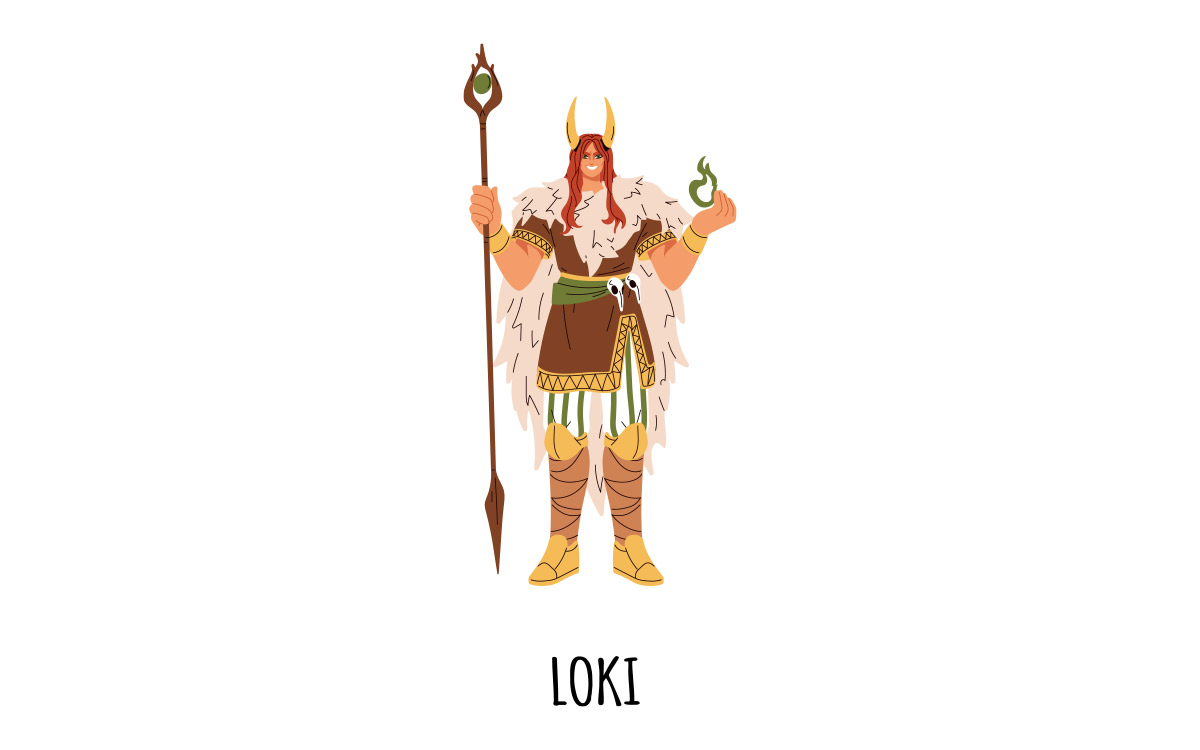
Loki: The God of Mischief, Trickery, and Chaos
Similar to how Thor became incredibly popular in recent decades is Loki. However, in Norse mythology, Loki is not the son of Odin and brother of Thor, but rather a “blood brother” of Odin who lived amongst the Aesir gods. As the trickster god, Loki had the ability to shapeshift into different forms.
Loki also had a complex relationship with the other gods. While he may help them at times, he may also do the opposite. Even though Loki was depicted as more on the mischievous side, he was still capable of inflicting harm. Loki was responsible for the death of the god Balder by carving an arrow out of his only weakness, mistletoe.
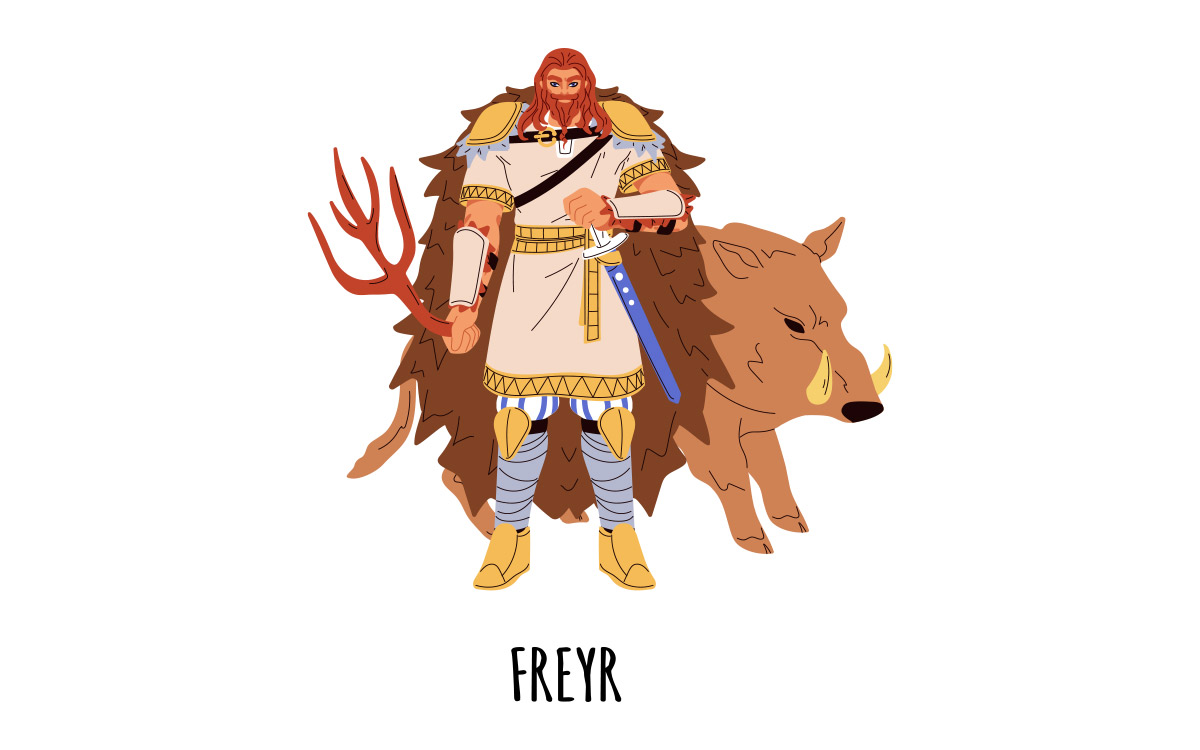
Freyr: The God of Fertility, Peace, and Prosperity
While Freyr belonged to the Vanir gods, he was also an honorary member of the Aesir gods as he was taken hostage in the latter part of the Aesir-Vanir war. Freyr is one of the most worshipped deities among the heathen Norse and Germanic peoples. Freyr is described by one Old Norse poem as “the foremost of the gods” and “hated by none.”
This was because people believed that their well-being and prosperity depended on his benevolence. It would especially manifest in sexual and ecological fertility, harvests, wealth, and peace. Freyr’s role in providing good health and abundance was symbolized by his fylgja, the boar Gullinborsti, and his enormous phallus. Freyr is also the frequent recipient of sacrifices from weddings and harvests.
Freyja: the Goddess of Love, Beauty, and Fertility
In Norse mythology, Freyja (sometimes anglicized as Freya in modern English) is a goddess associated with love, beauty, fertility, gold, and seiðr (a type of sorcery). She is one of the most prominent goddesses in Norse tales. The Old Norse spelling of her name was Freyja, using the runic letter for /y/ rather than the more modern spelling with a /j/. Over time, as the Norse languages evolved and the Latin alphabet became standard, the spelling changed to the modern standard of Freja in Scandinavian languages. So, while the original Old Norse texts would have spelled her name Freyja, today, it is more commonly spelled as Freja across northern Europe.
A member of the Vanir gods, Freyja ruled over the meadow of Folkvangr, the heavenly place where half of those who died in combat would go. The Valkyries would bring the other half to Valhalla. Freyja owned a torc or necklace called the Brisingamen and a cloak made of falcon feathers.
She rode a chariot drawn by two cats and was often accompanied by a boar called Hildisvini. She practiced a form of magic called Seidr, which gave her the gift to control and manipulate the desires and prosperity of others. As Freyja is associated with fate and destiny, she was also considered one of the most powerful Norse goddesses.
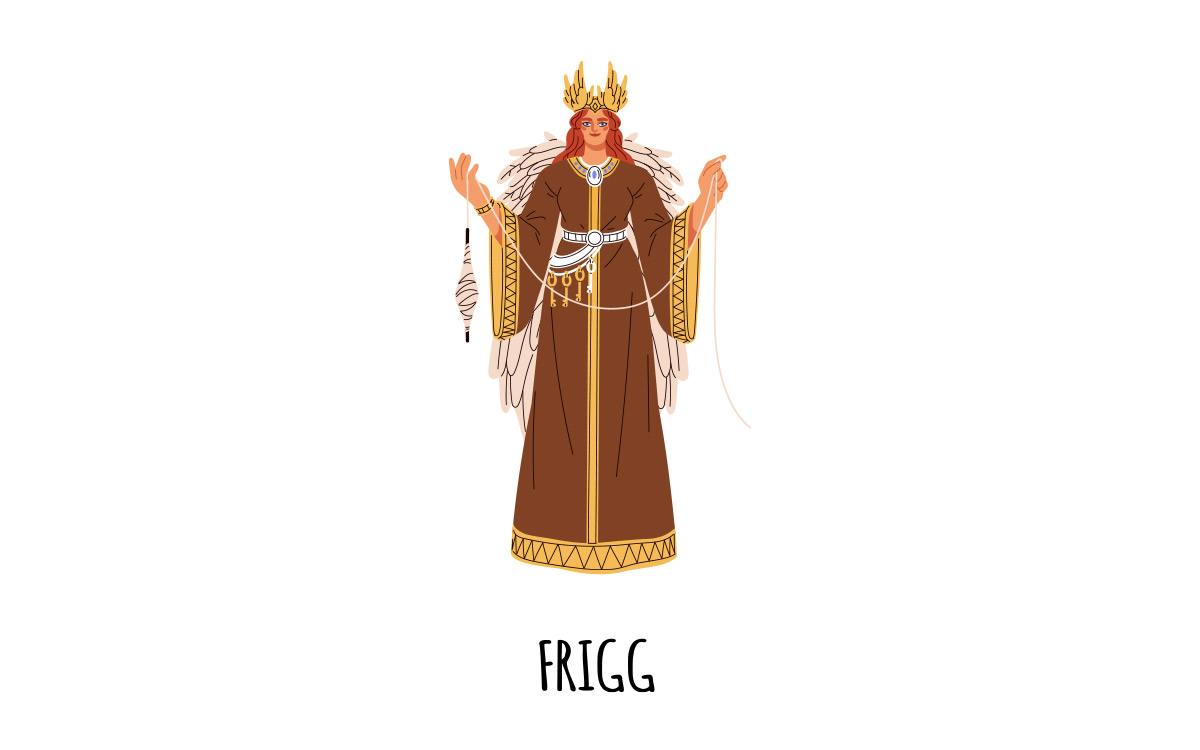
Frigg: The Goddess of Marriage, Motherhood, and Prophecy
The Norse goddess Frigg was the wife of Odin and was also the Queen of the Aesir gods and the most important of all the Norse goddesses. Frigg was the only one allowed to sit next to Odin and despite the many affairs he was involved in, she always stayed by his side. Also referred to as the goddess of the sky, Frigg was also associated with wisdom.
Frigg also possessed the gift of divination, but she never revealed her visions to anyone. Her name is where the word “Friday” comes from.
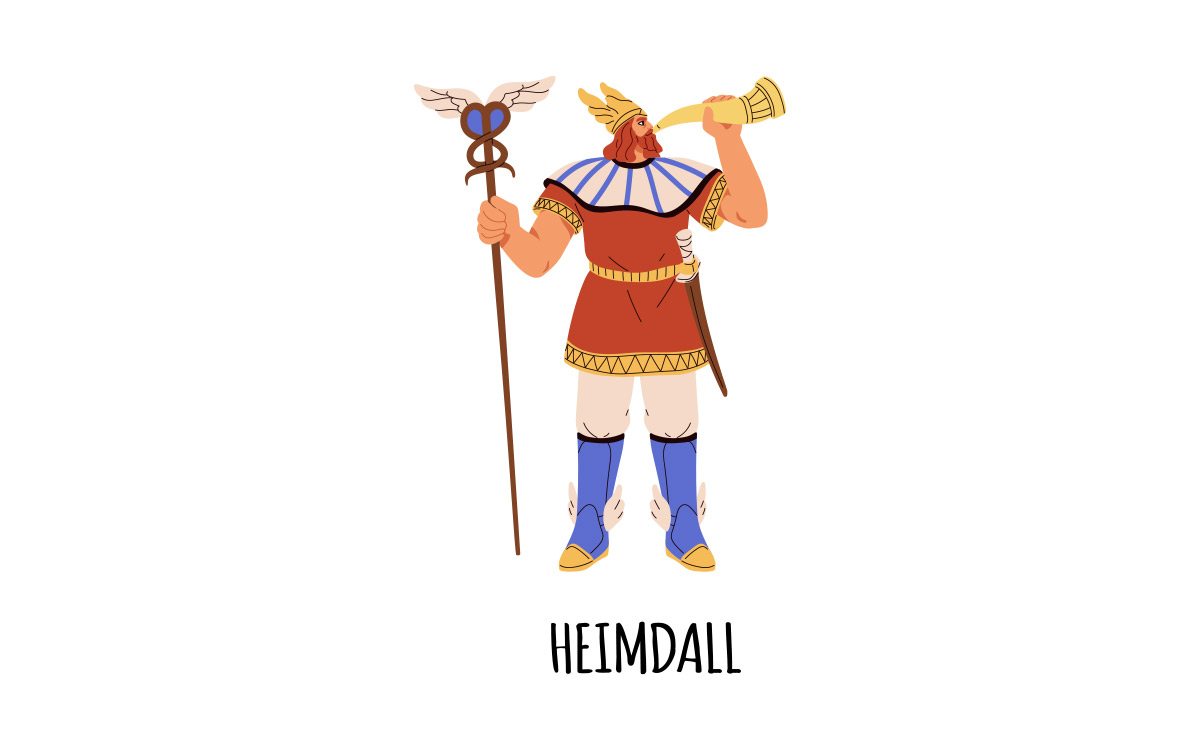
Heimdall: The God of Light, Day, and Watchfulness
Also known as a guardian of Asgard, Heimdall belonged to the Aesir gods. He ruled over the Himinbjorg, or “Sky Cliffs” at the top of Bifrost, the rainbow bridge that leads to Asgard. Heimdall was known for needing less sleep than a bird, and his eyesight was so sharp that he could see for hundreds of miles day and night. Heimdall’s hearing was also very acute to the point that he could hear grass growing.
He was often depicted as holding the horn Gjallarhorn that he sounded when there were intruders. During Ragnarok, the gods will know that their doom is at hand when they hear the sound of the Gjallarhorn. The sound of the horn was the sign that the giants were arriving, crossing the rainbow bridge to storm Asgard and kill the gods. Heimdall was often at odds with Loki.
Tyr: The God of War, Justice, and Law
The Norse god Tyr was the god of war, law, and justice. Tyr was not a prominent deity in the surviving Viking Age myths, so it is also believed that he didn’t play a big role. However, that wasn’t always the case, as Tyr was one of the most important gods to the Norse and other Germanic peoples.
The word Tuesday also stems from Tyr with the Old English “Day of Tiw,” which was based on the Latin “Dies Martis” or “Day of Mars,” as Romans associated Tyr with their own war god, Mars.
Norse Heroes
The stories of heroes in Norse mythology are as fantastical and immortalized in the legends and myths that are still being read about to this day.
Sigurd: A Legendary Hero who Slew the Dragon Fafnir
Sigurd was a Germanic hero most famous for his slaying of the dragon known as Fafnir. In the Norse and Germanic folklore, Sigurd was depicted as dying because of a quarrel between his wife and Brynhildr. Sigurd’s slaying of the dragon and possession of the hoard of the Nibelungen are common to both stories, also known as traditions.
There are two contradicting descriptions of Sigurd’s youth in the Nibelungenlied. In the main story, Sigurd is a prince, the son of King Siegmund, and his mother was Queen Sieglind. When Sigurd arrives at the Burgundian kingdom capital of Worms, he plans to woo the princess Kriemhild.
The other description of Sigurd in the story was by the Burgundian Vassal Hagen von Tronje. Hagen’s version describes Sigurd as a wandering warrior who won the hoard of the Nibelungen, the sword Balmung, and a cloak of invisibility that increases his strength 12 times. Hagen’s version also included the story that Sigurd killed a dragon and bathed in its blood.
Brynhildr: A Shieldmaiden who Was Cursed to Sleep in a Ring of Fire until Awakened by a Hero
Brynhildr is a shieldmaiden, also known as a valkyrie, and appears in the Volsunga Saga and some Eddic poems that tell a version of the same events. She was depicted as an Amazon-like queen in the continental Germanic tradition, where she is a main character in the Nibelungenlied.
In both stories, Brynhildr played a big role in the death of the hero Sigurd. Sigurd convinces her to marry the Burgundian king Gunther of Gunnar. Brynhildr’s desire to have Sigurd killed was due to a quarrel with his wife, Gudrun. In the Scandinavian version, Brynhildr kills herself after Sigurd’s death.
Beowulf: A Geatish Warrior who Defeated the Monster Grendel and Its Mother
The epic of Beowulf was popularized into a movie of the same name in the 2000s. The poem is divided into two parts. The first part takes place in Denmark, with King Hrothgar feasting and celebrating in his mead hall, Heorot. But the noise from all the celebrations angered the monster Grendel living in the swamp. Grendel proceeds to terrorize Heorot for the next 12 years with nightly visits, taking Hrothgar’s warriors and devouring them.
Beowulf, a Geatish prince, hears of the trouble, leads a small group of retainers, and offers to get rid of Grendel. After some celebrating with Hrothgar at Heorot, Grendel visits and devours one of Beowulf’s men. Beowulf faces him, refusing to use a weapon to kill him until he ultimately rips Grendel’s arm out. The monster, in turn, returns to the swamp and dies.
Beowulf would soon face the wrath of Grendel’s mother, who kills one of Hrothgar’s men. The next day, Beowulf goes into the lake to look for her and ultimately kills her with his sword.
Ragnar Lothbrok: A Viking King who Led Raids on England and France
Ragnar Lothbrok is said to be the father of three men – Halfdan, Inwaer or “Ivar the Boneless,” and Hubba, who led the invasion of East Anglia in 865. According to the Gesta Danorum, Ragnar Lothbrok was a Danish king whose campaigns included a battle with the Holy Roman Emperor Charlemagne. In the story, Ragnar is eventually captured by the Anglo-Saxon king Aella of Northumbria and thrown into a snake pit to die.
Ragner’s three sons would likely later seek to avenge his father’s death.
Erik the Red: A Viking Explorer Who Discovered Greenland
The Norwegian explorer Erik the Red founded the first European settlement of Greenland. He was also the father of Leif Erikson, one of the first Europeans to set foot in North America. Erik was given the nickname “Erik the Red” because of his hair. His father, Thorvald, was exiled from Norway for manslaughter.
Erik would also be exiled in 980 from Iceland and since sought to explore the west, where Greenland is today. He would leave the westernmost point of Iceland, Snaefellsjokull, in 982 with a small group of men. They reached the opposite shore of Greenland, which was skirted by the Norwegian Gunnbjorn Ulfsson in the early 10th century.
After settling in the new land, Erik would later name the country Greenland as he believed such a name would attract more settlers.
Norse Mythology and the Vikings:
Norse mythology, with the gods and goddesses that are part of it, was what gave meaning to the Vikings’ lives. They believed that the world as it is was enchanted. The Vikings did not feel the need to seek salvation from the world. Instead, the Vikings saw the world as something to marvel at, including what would be referred to as “nature” and “culture.”
Norse mythology, with their religion, never sought to downplay the challenges faced in everyday life. Rather, Norse mythology acknowledged such challenges and praised the attempt to master them through good deeds. The Vikings saw that such a life was a good one.
The whole community called upon gods and goddesses, and places sometimes had the names of gods in them. People would also offer sacrifices to the gods in times of need, such as famine, disease, or war, or even during weddings to receive blessings. This worldview would gradually change over time, especially with the emerging influence of Christianity in the region.
Even as Christianity became a widespread religion, the polytheistic Vikings adopted Christ to their beliefs.
To Wrap Things Up…
Today, there remains a fascination with Norse mythology, whether from reading about them or their references in pop culture. Learning about Norse mythology gives us an insight into how the civilization at the time lived and what gave their lives meaning. People would call upon certain gods for luck, wisdom, or to give thanks while also learning to appreciate the world they believed to be enchanted.
Interested in more about Norse and Viking culture? Check out our article Viking Runes: Understanding the History and Symbolism Behind the Runic Alphabet.
The post Norse Mythology: A Look at Viking Gods, Goddesses, and Heroes appeared first on FanBolt.



